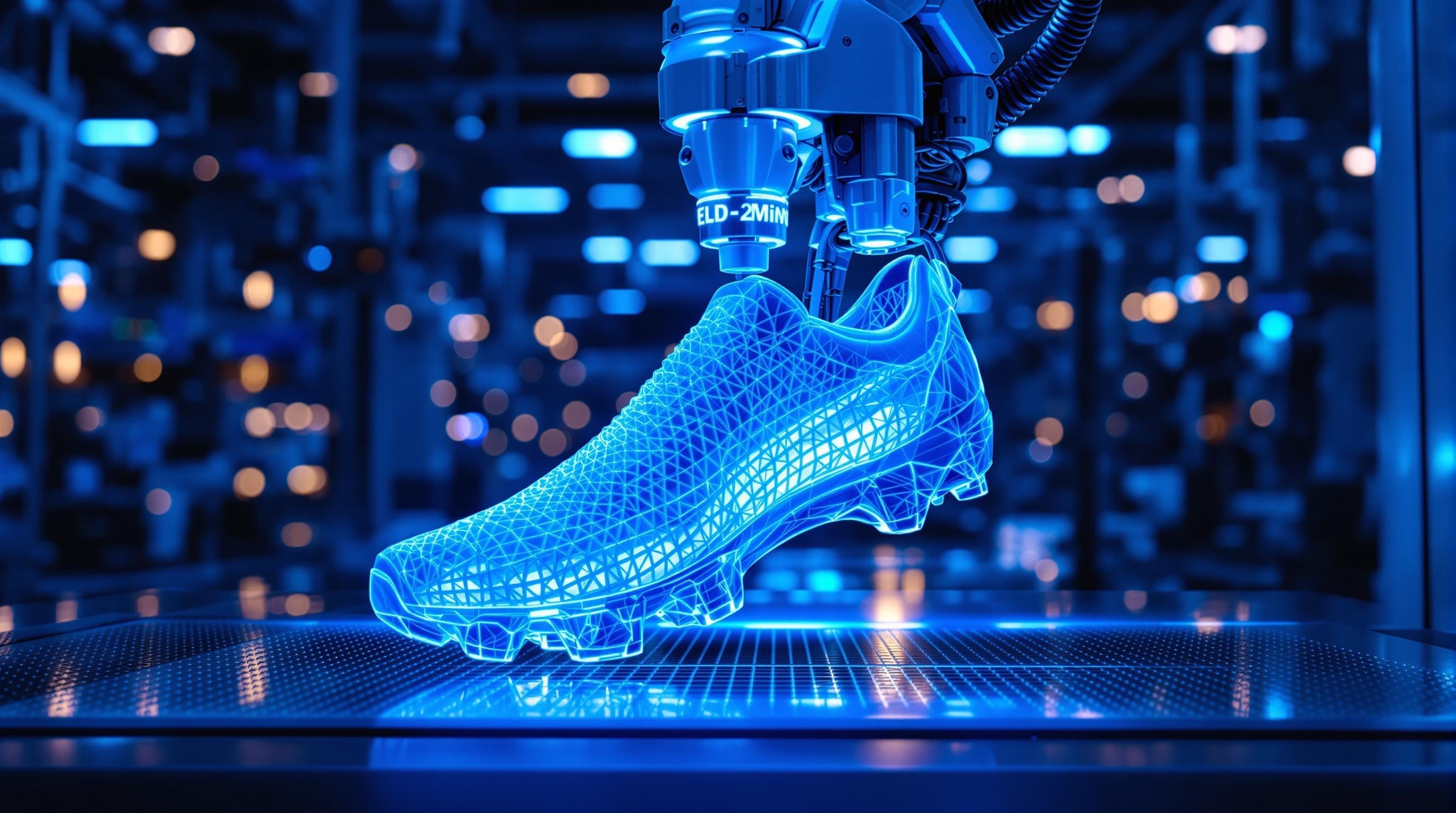
모든 제조는 이제 데이터에서 시작됩니다
3D프린팅, 즉 적층 제조(Additive Manufacturing) 기술은 프로토타이핑을 넘어 최종 제품 생산에까지 활용되며 제조업 전반의 패러다임을 바꾸고 있습니다. 이러한 변화의 중심에는 디지털 청사진, 바로 3D 모델 데이터가 있습니다. 실체가 있는 모든 물체는 이제 디지털 파일에서 시작되며, 이 데이터를 제작, 공유, 검증하는 생태계 없이는 오늘날의 산업용 3D프린팅을 논할 수 없습니다.
전 세계 디자이너와 기업을 연결하는 3D 모델 플랫폼 시장은 폭발적으로 성장하고 있지만, 취미 활동과 실제 산업 현장의 요구는 근본적으로 다릅니다. 이 글에서는 3D 모델 데이터 생태계의 구조를 산업용 3D프린팅의 관점에서 분석하고, 단순한 파일 공유를 넘어 실제 대량생산으로 이어지기 위해 무엇이 필요한지 심도 있게 살펴보고자 합니다.
3D 모델 플랫폼의 현주소: 취미에서 산업까지의 스펙트럼

현재 3D 모델 데이터 플랫폼은 크게 세 가지 형태로 나뉩니다. Thingiverse나 Printables처럼 누구나 무료로 파일을 공유하는 오픈소스 리포지토리, Cults3D나 MyMiniFactory처럼 창작자가 수익을 창출하는 상업적 마켓플레이스, 그리고 GrabCAD처럼 엔지니어링에 특화된 산업용 니치 플랫폼입니다.
이러한 플랫폼들은 방대한 데이터를 축적하며 메이커 운동과 크리에이터 이코노미를 활성화하는 데 크게 기여했습니다. 하지만, 실제 산업 현장에서 요구하는 대량생산의 기준에서 이 데이터들을 바라보면 명확한 한계점이 드러납니다. 산업 제조는 ‘일단 출력해보는’ 시도가 아니라, ‘반드시 계획대로 나와야 하는’ 결과가 중요하기 때문입니다. 따라서 산업계는 데이터의 양보다 신뢰성과 기능성을 훨씬 더 중요하게 여깁니다.
산업용 3D프린팅이 요구하는 데이터의 조건

취미용 출력과 산업용 3D프린팅의 가장 큰 차이는 바로 ‘결과에 대한 책임
’입니다. 수백, 수천 개의 부품을 생산해야 하는 환경에서는 단 하나의 파일 오류가 막대한 시간과 비용 손실로 이어질 수 있습니다. 따라서 3D프린팅서비스기업은 다음과 같은 엄격한 데이터 기준을 요구합니다.
1. 품질과 신뢰성: 검증되지 않은 데이터의 위험 오픈소스 플랫폼의 가장 큰 딜레마는 품질 관리가 어렵다는 점입니다. Thingiverse의 경우, 방대한 자료를 보유하고 있음에도 불구하고 출력 실패를 유발하는 설계 오류나 손상된 파일이 많아 사용자의 신뢰를 잃어가고 있습니다. 반면, MyMiniFactory가 커뮤니티 테스트를 통해 품질을 보증하는 정책을 도입한 것은 데이터 신뢰성이 얼마나 중요한지를 보여줍니다. 산업용 3D프린팅에서는 이보다 더 높은 수준의 검증, 즉 치수 정확도, 공차, 조립성, 내부 구조의 무결성까지 보장되어야 합니다.
2. 파일 포맷의 진화: STL을 넘어 3MF로 지난 30년간 업계 표준이었던 STL 파일은 오직 모델의 외형 기하구조(mesh)만 저장할 수 있습니다. 색상, 재질, 내부 밀도, 저작권 등 현대적인 산업용 3D프린팅에 필수적인 메타데이터는 담을 수 없습니다. 이는 복잡한 워크플로우와 데이터 유실의 원인이 됩니다. 이를 해결하기 위해 개발된 3MF(3D Manufacturing Format)는 기하학 구조는 물론, 색상, 재질, 프린터 설정, 라이선스 정보까지 하나의 파일에 통합하여 저장합니다. 이는 데이터의 무결성을 보장하고, 설계부터 생산까지의 과정을 매끄럽게 연결하여 대량생산의 효율과 안정성을 극대화하는 핵심 기술입니다.
3. 지적 재산권(IP) 보호: 가장 중요한 비즈니스 자산 기업 고객에게 3D 데이터는 단순한 파일이 아닌 핵심적인 지적 자산입니다. 디자인 파일 하나가 유출되면 전 세계 어디서든 무한 복제가 가능한 디지털 제조 시대에 IP 보호는 사업의 성패를 좌우하는 문제입니다. 오픈 플랫폼에서의 파일 공유는 이러한 보안에 매우 취약합니다. 따라서 실제 산업 프로젝트에서는 암호화 기반 스트리밍 출력, 디지털 권리 관리(DRM) 등 기술적 보호 장치와 더불어, 신뢰할 수 있는 파트너와의 엄격한 계약(NDA)을 통한 체계적인 데이터 관리가 필수적입니다.
AI와 자동화: 디지털 청사진의 미래와 생산의 연결

최근 생성형 AI 기술의 발전은 3D 모델링의 패러다임을 바꾸고 있습니다. Meshy, Spline AI와 같은 서비스는 간단한 텍스트 프롬프트나 2D 이미지만으로 3D 파일을 자동 생성하며 ‘디자인의 민주화’를 이끌고 있습니다.
산업 분야에서 AI의 역할은 더욱 중요합니다. AI는 단순히 형태를 만드는 것을 넘어, 주어진 제약 조건(예: 무게, 강도, 내열성) 하에서 최적의 설계를 수천 가지 탐색하여 제안하는 ‘엔지니어링 파트너’로 진화하고 있습니다. 이렇게 생성된 복잡하고 유기적인 디자인은 전통적인 가공 방식으로는 제작이 불가능한 경우가 많아, 오직 산업용 3D프린팅을 통해서만 현실화될 수 있습니다.
또한, Thangs와 같은 AI 기반 검색 엔진은 형상 자체를 분석하여 유사하거나 호환 가능한 부품을 찾아줌으로써, 설계 및 R&D 속도를 획기적으로 높이고 있습니다. 이처럼 AI가 설계의 효율을 높이면, 3D프린팅서비스기업은 이를 받아 빠르고 정확하게 대량생산으로 연결하는 역할을 수행하게 됩니다.
디지털 데이터를 실제 산업 부품으로 구현하는 파운드리

3D 모델 데이터 생태계가 아무리 발전하더라도, 디지털 파일을 신뢰할 수 있는 물리적 제품으로 구현하는 과정에는 고도의 전문성이 필요합니다. 바로 이 지점에서 글룩과 같은 3D프린팅 파운드리의 역할이 중요해집니다.
고객의 설계 데이터가 사내 R&D팀에서 나오든, GrabCAD와 같은 전문 플랫폼에서 나오든, 혹은 AI에 의해 생성되었든, 글룩은 그 데이터를 받아 실제 산업 현장의 요구 조건에 맞춰 최종 부품으로 완성합니다. 이는 단순히 ‘프린트’ 버튼을 누르는 것과는 차원이 다른 과정입니다.
아이디어가 자산이 되는 시대의 제조 파트너

3D 모델 데이터 생태계는 기술, 예술, 비즈니스가 융합된 거대한 산업으로 진화하고 있습니다. 하지만 디지털 파일을 다운로드하는 것과 실제 산업용 부품을 손에 쥐는 것 사이에는 깊은 간극이 존재합니다. 이 간극을 메우는 것이 바로 신뢰할 수 있는 제조 파트너의 역할입니다.
GLUCK은 대량생산이 가능한 산업용 3D프린팅 서비스 기업입니다.
글룩은 고객의 사용 목적에 맞춰 최적의 소재를 제안하고, DfAM(적층 제조 특화 설계)을 통해 생산 효율성과 기능성을 극대화하며, 생산 전 과정을 표준화하여 품질을 관리합니다. 수백, 수천 개의 부품을 반복 생산해도 균일한 결과를 보장하는 것, 이것이 바로 산업용 3D프린팅 기반 대량생산의 핵심이자 글룩이 제공하는 가치입니다.
글룩은 최신 데이터 기술 동향을 깊이 이해하고, 이를 안정적인 생산 시스템과 결합하여 아이디어가 실제 산업 가치로 이어지는 가장 빠르고 효율적인 경로를 제공합니다. 창작에서 산업으로, 디지털에서 현실로 넘어오는 그 결정적인 과정에 글룩이 함께합니다.
지금 글룩에 문의해 보세요.
📩 제작 및 상담 문의: support@glucklab.com

All Manufacturing Now Begins with Data
Additive Manufacturing (3D Printing) is no longer limited to prototyping—it’s now disrupting the entire manufacturing paradigm by enabling full-scale production. At the center of this shift lies the digital blueprint: the 3D model data. Every tangible product today begins as a digital file. Without a reliable ecosystem to create, share, and verify this data, modern industrial 3D printing wouldn’t be possible.
Although 3D model platforms connecting global designers and companies are growing rapidly, there's a clear disconnect between the hobbyist community and actual industrial needs. This article explores the 3D model data ecosystem through the lens of industrial-scale 3D printing and outlines what it takes to bridge from simple file sharing to reliable mass production.
The Current Landscape of 3D Model Platforms: From Hobby to Industry

Today’s 3D model platforms largely fall into three categories:
- Open repositories like Thingiverse or Printables, where anyone can freely share files
- Commercial marketplaces like Cults3D or MyMiniFactory, where creators monetize designs
- Industrial-specific platforms like GrabCAD, tailored for engineering-grade use
These platforms have helped fuel the maker movement and creator economy by hosting vast volumes of content. However, when evaluated through the lens of industrial manufacturing—which demands consistent, predictable results—they reveal key limitations. Industrial production isn’t about “just trying it out,” but rather ensuring the output is right the first time, every time. Hence, reliability and functionality outweigh sheer volume of data.
What Industrial 3D Printing Demands from Data

The key difference between hobbyist printing and industrial use is accountability for outcomes. In high-volume production, a single file error can lead to catastrophic losses. Industrial 3D printing service providers therefore require strict standards, such as:
1. Quality and Reliability: The Risks of Unverified Data
Open-source platforms struggle with quality control. For example, Thingiverse offers a massive archive, but many files contain errors or are incomplete, leading to print failures. In contrast, MyMiniFactory introduced community testing and approval mechanisms, highlighting how critical reliability is. Industrial-grade files need even more: verified dimensions, tolerances, assembly compatibility, and internal structural integrity.
2. File Format Evolution: Beyond STL to 3MF
For 30 years, STL files have been the industry standard, but they only capture surface geometry. They lack modern metadata—material, color, density, even intellectual property tags. This leads to workflow inefficiencies and data loss.
The emerging 3MF (3D Manufacturing Format) solves this by packaging geometry, color, printer settings, and license info into one file. This ensures data integrity and seamless transitions from design to production—critical for scalable, error-free manufacturing.
3. Intellectual Property (IP) Protection: A Core Business Asset
To industrial clients, 3D files are valuable business assets. In the age of digital manufacturing, a leaked design file can be endlessly copied anywhere in the world. Open platforms lack the security required for this reality. Thus, professional-grade projects demand encryption-based streaming print systems, DRM (Digital Rights Management), and NDAs (Non-Disclosure Agreements) to ensure data confidentiality.
AI and Automation: Connecting Digital Blueprints to Production

Recent advances in generative AI are reshaping the modeling process. Tools like Meshy or Spline AI generate 3D models from text prompts or 2D images, democratizing design access.
In industry, AI’s role is expanding further—optimizing for performance under given constraints like weight, heat resistance, or strength. This kind of algorithmic engineering yields complex, organic structures often unachievable through traditional fabrication—making industrial 3D printing the only viable path for physical realization.
Platforms like Thangs even use AI-based shape search to find compatible parts, significantly speeding up R&D. As AI enhances design productivity, 3D printing service providers must be ready to translate these outputs into real-world products efficiently and reliably.
Foundries for Turning Digital Models into Physical Parts

Regardless of how advanced the 3D model ecosystem becomes, turning those files into industrial-grade parts still requires deep expertise. This is where 3D printing foundries like GLUCK come in.
Whether the design originates from in-house R&D, platforms like GrabCAD, or is AI-generated, GLUCK takes that file and transforms it into final components that meet real-world industrial standards. This is far beyond simply hitting "Print."
Your Manufacturing Partner in the Era of Digital-First Ideas

The 3D model data ecosystem is evolving into a powerful convergence of technology, design, and business. But downloading a file and holding a reliable part in your hand are two very different things. Bridging that gap is what a trusted manufacturing partner does.
GLUCK is an industrial 3D printing service provider capable of mass production.
We offer:
- Material selection tailored to each application
- DfAM (Design for Additive Manufacturing) to maximize efficiency and functionality
- Fully standardized processes for consistent, repeatable quality
From hundreds to thousands of parts, we ensure identical performance at scale.
With deep insight into data-driven production trends, we connect the digital design layer with stable, scalable manufacturing. From ideation to industrialization—from digital to tangible—GLUCK is your reliable partner every step of the way.
📩 For production inquiries: support@glucklab.com
#GLUCK #글룩 #3D프린팅 #산업용3D프린팅 #SLA3D프린팅 #대량생산 #DfAM #3D설계 #3D프린팅산업 #3D프린터 #3D모델링 #3D프린팅가격 #3D프린팅업체 #금형제작 #금형 #사출 #몰드제작 #3D프린팅견적 #3D출력 #MassProduction #3DPrinting #LargescaleProduction #AdditiveManufacturing #SLAtechnology #ManufacturingInnovation #DigitalTransformation #SmartManufacturing
'인사이트 (Insights)' 카테고리의 다른 글
| 그래스호퍼와 3D프린팅, 알고리즘이 빚어내는 제조 산업 (3) | 2025.08.04 |
|---|---|
| 바이오프린팅, '바이오 잉크'를 사용하는 미래 의료산업 (3) | 2025.07.25 |
| 누구나 메이커가 되는 세상, 산업용 3D프린팅이 바꾼 굿즈 산업 (4) | 2025.07.21 |
| 데이터로 본 한국 3D프린팅 산업과 전략 (0) | 2025.07.21 |
| 이젠 3D모델링도 AI한테 맡긴다? (0) | 2025.07.18 |
